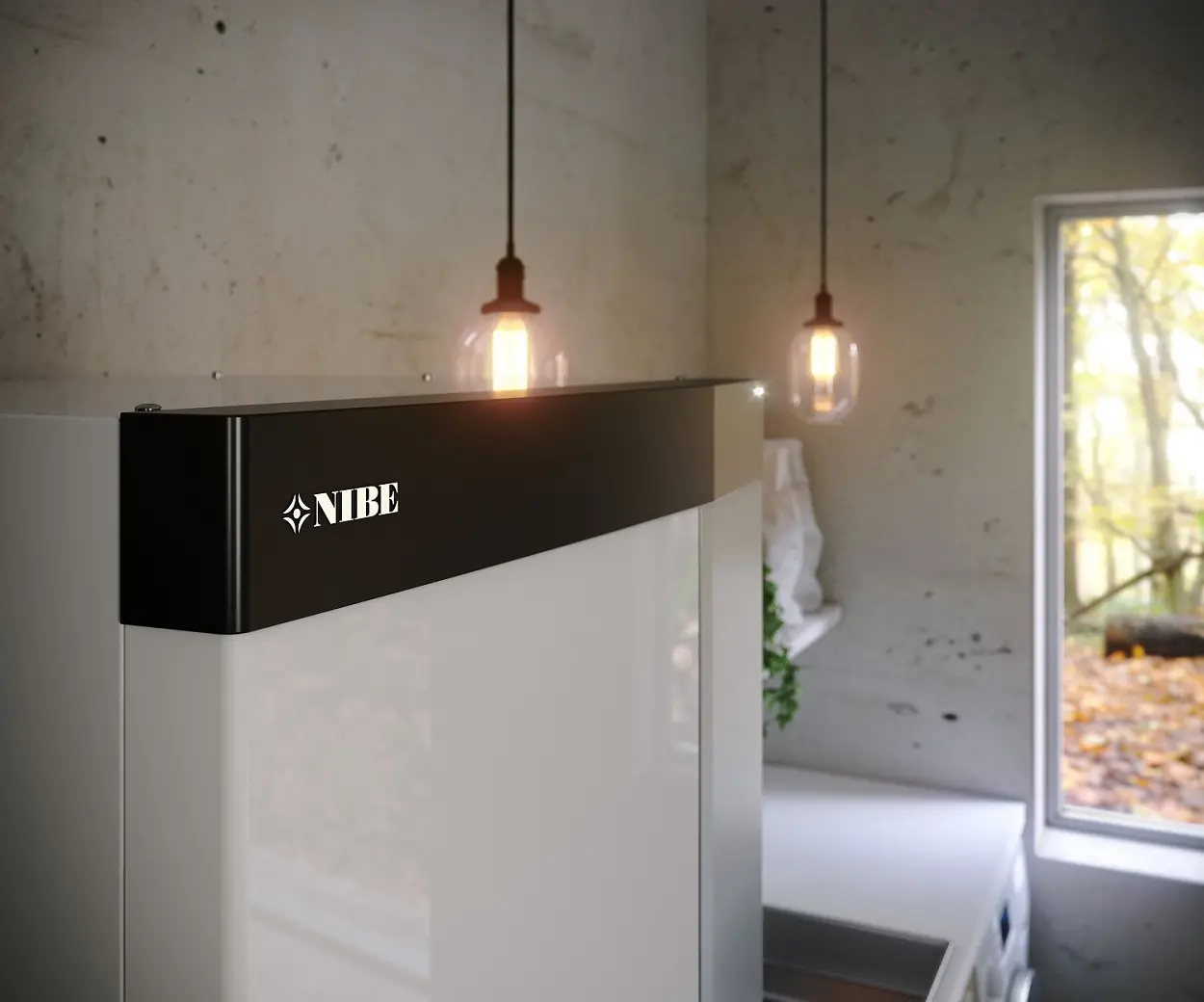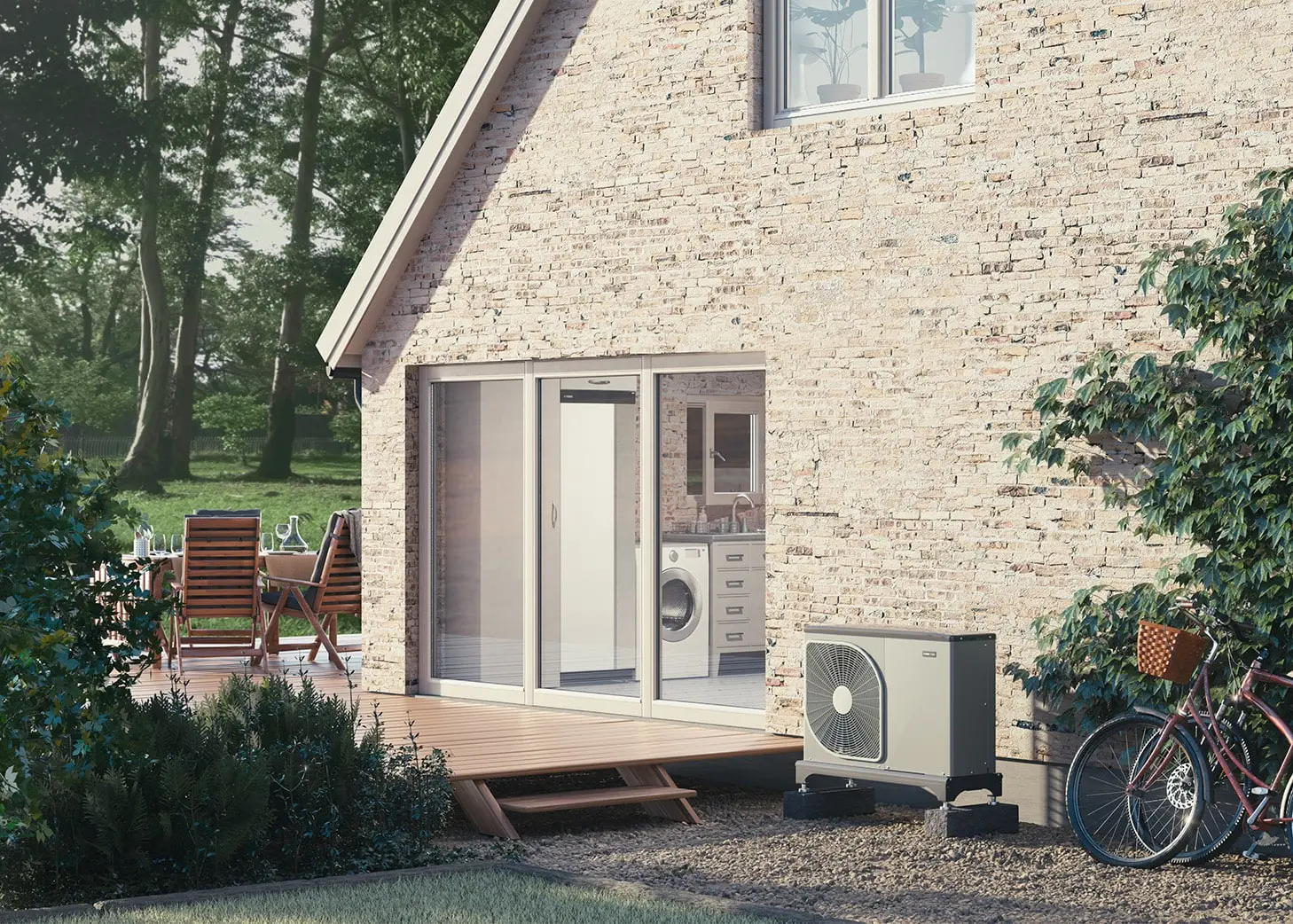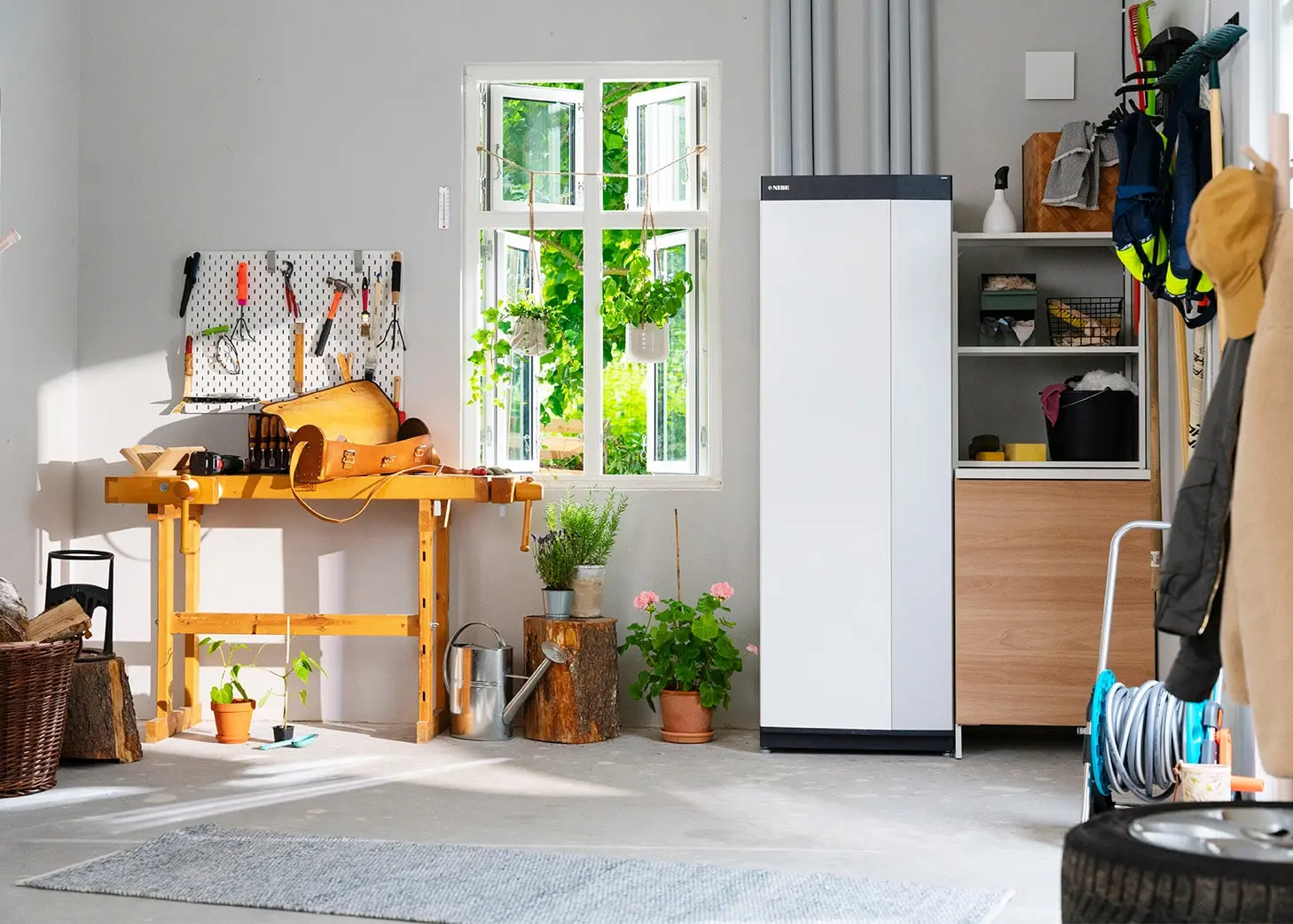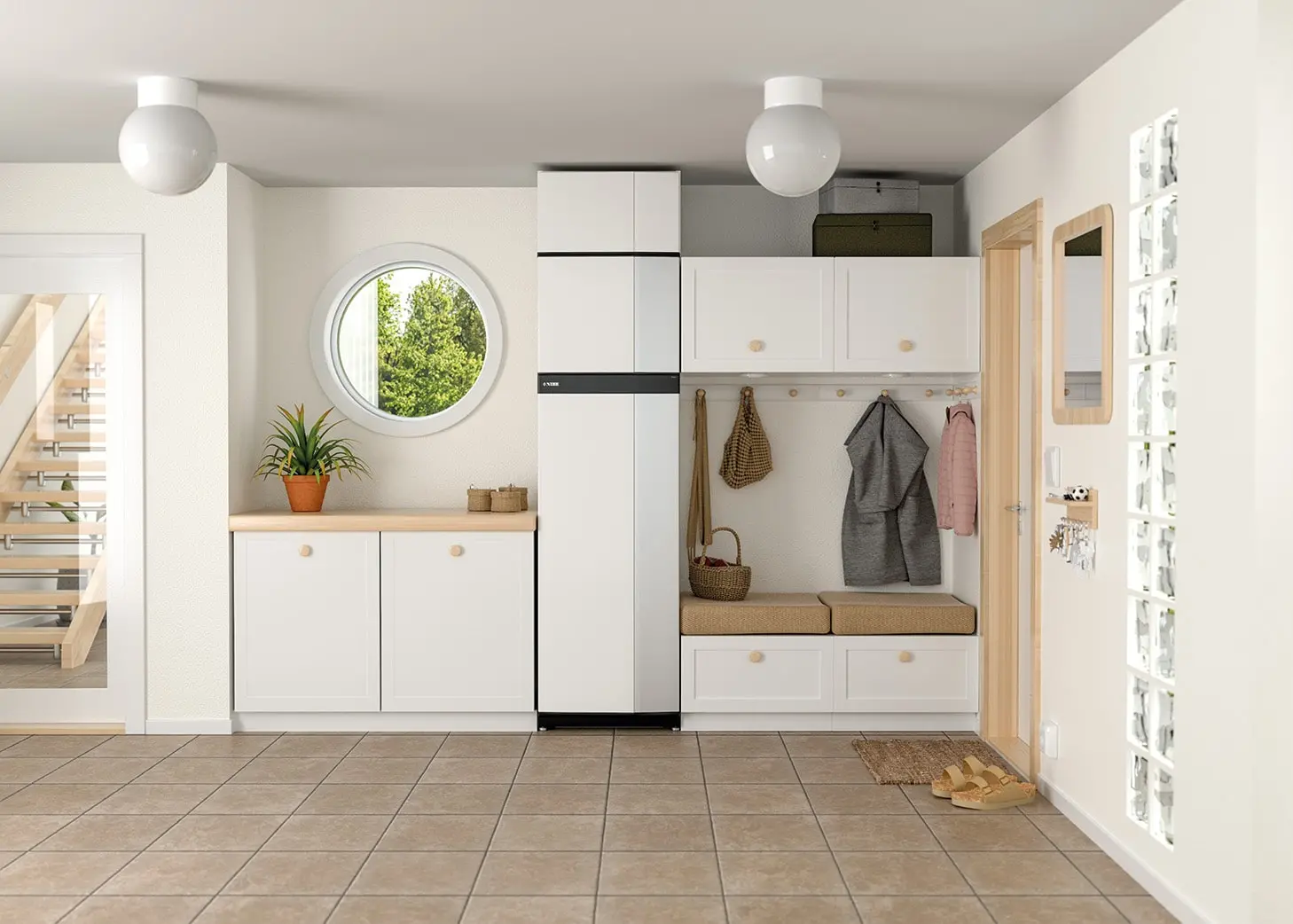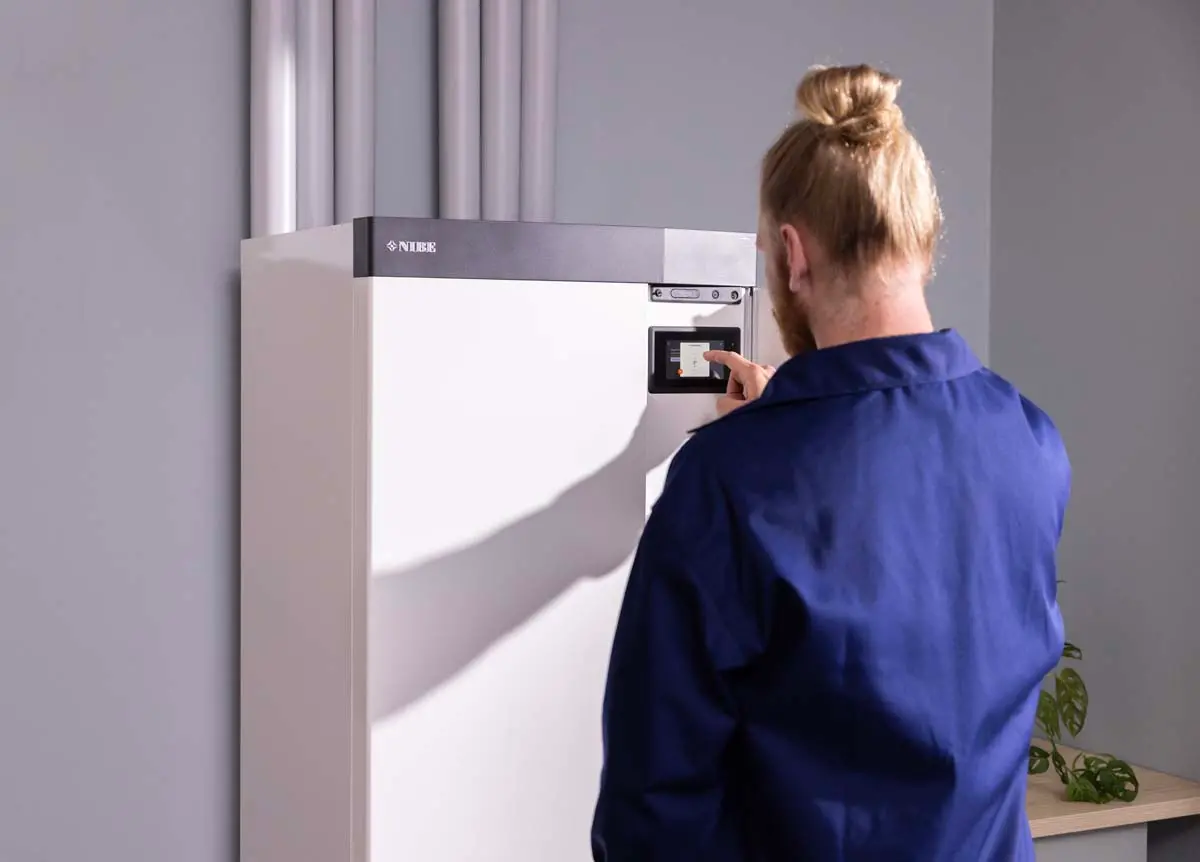
The Refrigeration Cycle
All heat pumps operate using a principle called the refrigeration cycle. The heat pump uses low grade energy to change the state of a refrigeration fluid from a liquid to a gas. During this change of state high grade heat energy is produced.
The important point to note is that refrigerant gas has a very low boiling point, around minus 40 degrees C. This allows heat pumps to extract heat from what would other wise be considered as cold sources of energy.
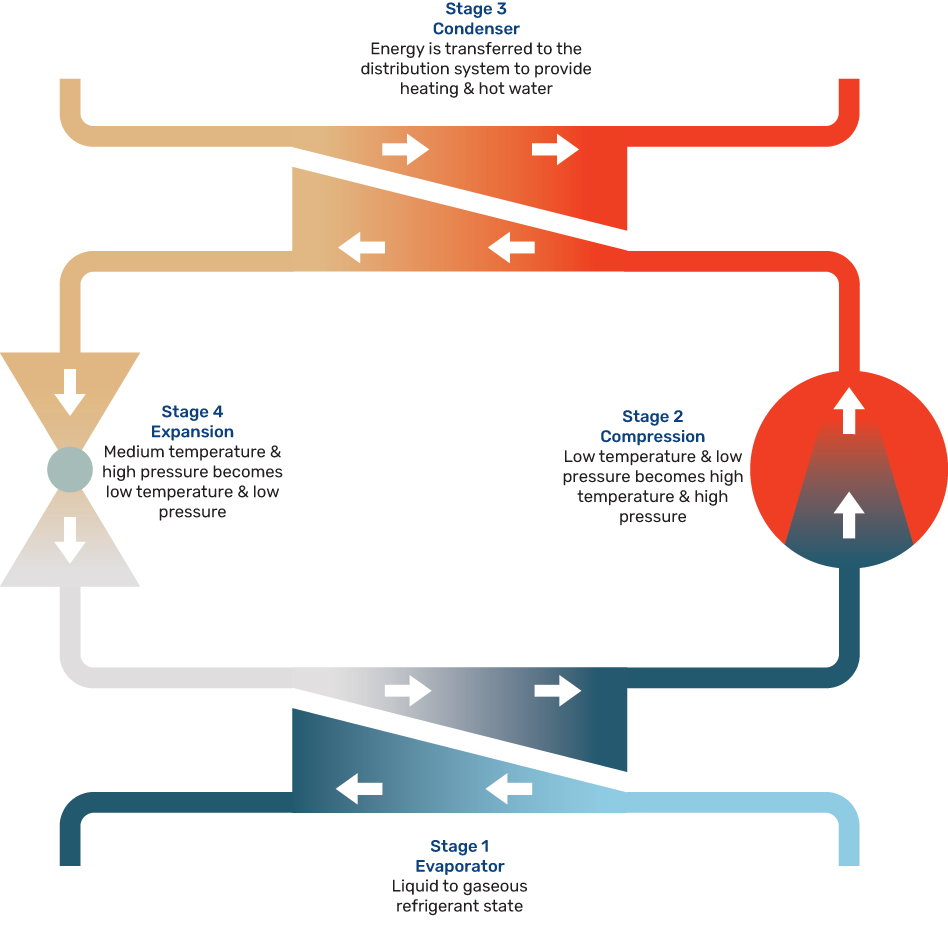
Different NIBE Heat Pump Types:
Air Source Heat Pumps Principles
Ground Source Heat Pump Principles
Exhaust Air Heat Pump Principles
Types of Ground Source Collector:
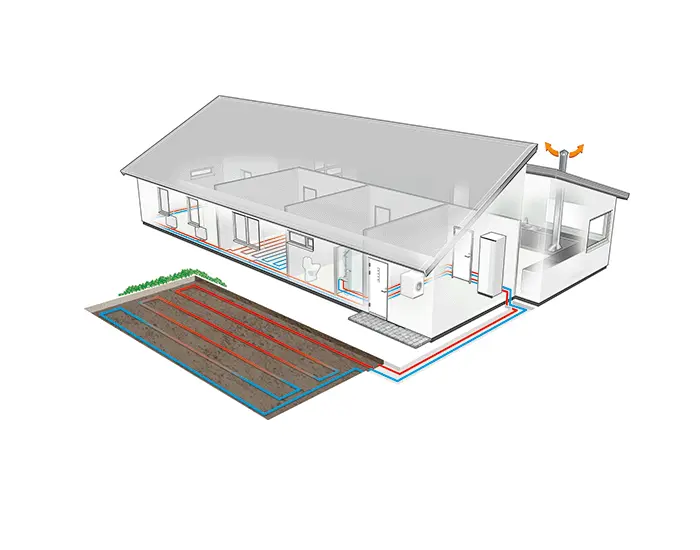
Horizonal Surface Collector

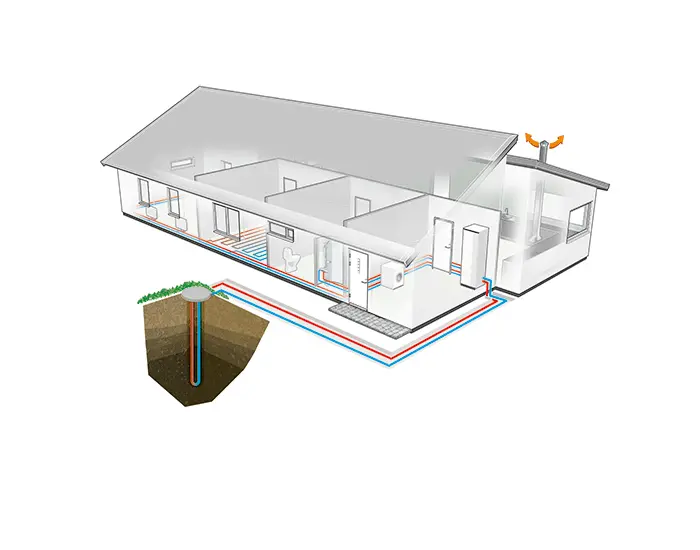
Borehole Rock Collector

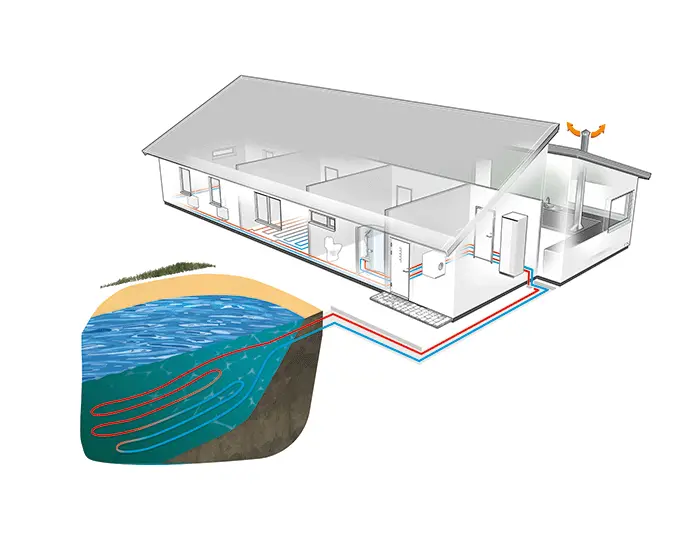
Closed Loop Lake Collector

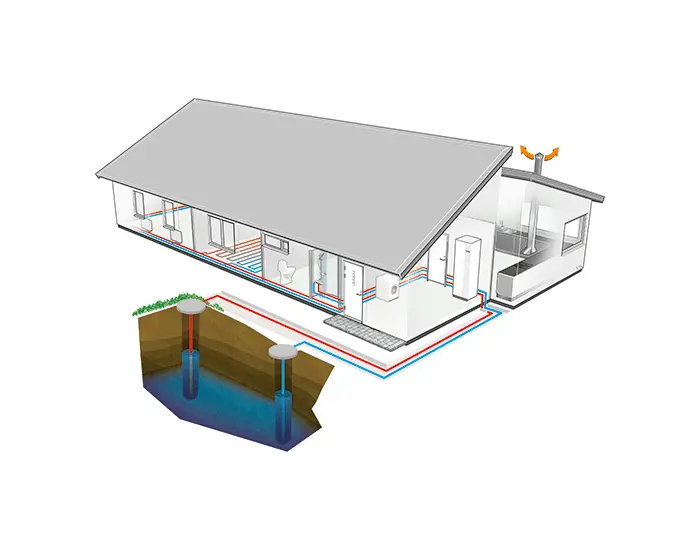
Open Loop / Ground Water Collector

How efficient are heat pumps?
Heat pumps are much more efficient than other heating systems. This is because the amount of heat they produce is higher than the amount of electricity they use. The Coefficient of Performance (CoP) is used to measure the amount of heat produced for every unit of electricity.
Will installing a heat pump help save money on my heating bills?
If you buy a good-quality heat pump and get it properly installed, then it’s likely to save you money in the long run. This is because a heat pump is three to four times more efficient than a gas boiler, which means you should be able to reduce your heating bills. This is especially relevant if you’re replacing an old, inefficient system.
Advantages vs disadvantages of a heat pump
While the benefits of heat pumps outweigh the negatives, there are some arguments that can be made for both sides. In order to help you decide whether a heat pump is the right solution for you, we have listed some of the key pros and cons below.
The advantages of a heat pump system
A heat pump system is one of the most efficient and popular ways to heat and cool a home. They can also be used to provide hot water.
Lower running costs
Heat pumps have a much better average efficiency rating than gas boilers, maximising the output for the energy consumed. Not only is this good for performance, but also in terms of saving you money each month.
Less maintenance
In comparison to gas boilers, heat pumps require less maintenance and tend to not need servicing as often. This is partly because there are fewer safety concerns. You’ll just need to factor in the annual servicing.
User-friendly
Good quality heat pumps tend to be straightforward to use, with easy-to-follow controls and little maintenance required. In the main, they can also be used and adjusted using an app from your chosen device.
Reduces carbon emissions
Heat pumps burn no fossil fuels and rely solely on electricity. This means you’re able to heat your home more sustainably and also reduce the expensive costs associated with gas bills.
Provides cooling and heating
Not only is a heat pump great for heating your home, but it can also be used to keep your home cool during warmer months. Therefore, with a heat pump, it’s likely you won’t need an air conditioning unit.
Eligible for Boiler Upgrade Scheme
If you are a homeowner and your boiler is more than five years old, you may be eligible for the Boiler Upgrade Scheme. The scheme offers a free boiler replacement for homeowners who meet the eligibility criteria.
The disadvantages of a heat pump system
A heat pump system is a great way to heat and cool your home, but it does have some disadvantages.
Higher upfront cost
Unfortunately, the cost of installing a heat pump can be quite expensive. However, there are a number of grants available to help if you have financial concerns. Plus, once it’s installed, it should save you money in the long run.
Uses more electricity
As heat pumps rely on electricity, you’ll inevitably see a rise in your electricity bill. However, if you’re on the right tariff, then heat pumps are still considerably more efficient to run. We recommend you get in touch with your supplier to ensure you’re on the appropriate tariff.
Proper planning is needed before installation
It’s very important that your heat pump is installed correctly in order to enjoy its true benefits. Your property will need to be well insulated and the location of your heat pump to be properly assessed before installation. Use our search tool to find a reputable installer near you.
What to consider before buying a heat pump
There are a few things you should consider before you buy a heat pump. Some of those considerations include:
- Climate
- Size
- Budget
- Efficiency rating
- Features
- Design
- Brand
- Sustainability
- Maintenance
Advanced features to look for in heat pump systems
When shopping for a heat pump system, be sure to look for advanced features. These features can help improve the efficiency and performance of your system, and can save you money on your energy bills. Features we recommend you look for include:
- Variable speed compressor
- Inverter technology
- Built-in thermostat
- Programmable settings
- Humidity control
What are the costs of a heat pump system?
A heat pump system can be an affordable way to heat your home and can save you money on your energy bills. However, the cost of a heat pump system will vary depending on the size of your home, the type of system you choose, and the installation and running costs. For sustainable, cost-effective heat pumps, take a look at our range of market-leading products.
Why heat pumps are worth the investment
Heat pumps are one of the most efficient and environmentally-friendly ways to heat your home. This means they can save you money on your energy bill and are a great way of reducing your carbon footprint.
Check if a heat pump could be suitable for your home
The latest reports show that heat pumps are suitable for any house type. The total heat a property requires to be heated to 21 doesn’t change with a heat pump in comparison to a gas boiler or equivalent.
The emphasis should be back to the design of the system, where older houses will need a thorough heat loss survey and existing system inspection to determine if any pipework or radiators will need replacing.
It’s also worth considering improving your property’s thermal efficiency. For example, increasing insulation levels, in addition to installing a heat pump, will help deliver savings and reduce energy usage and your carbon footprint.
In the UK, air source heat pumps are the most common type of domestic heat pump, as they tend to be more suitable for most homes and, generally, less disruptive to install.
For more information about which heat pump is right for you, take a look at our products. Alternatively, you can speak to a NIBE expert who will review your project and put you in touch with a NIBE Pro Installer.
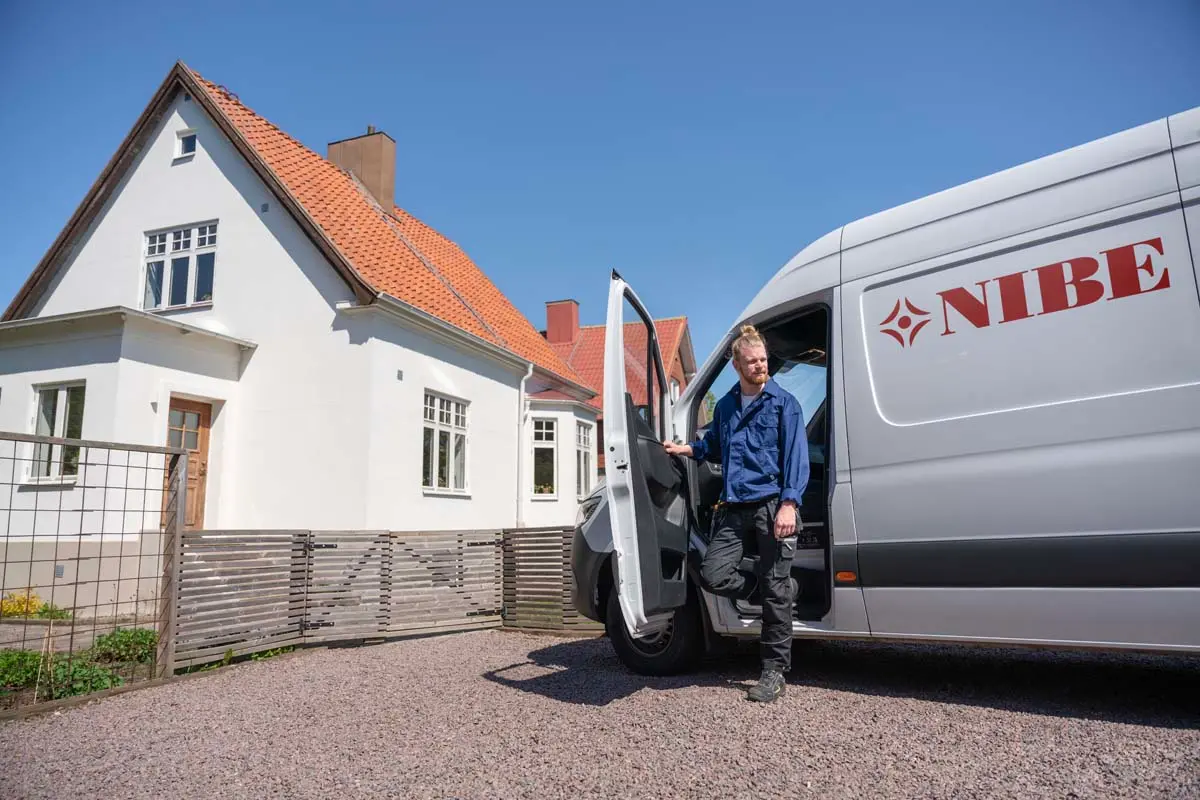
Talk To A NIBE Expert
Had more thought about which NIBE heat pump type you might be interested in?
Speak to a NIBE Expert today about your project and we'll put you in touch with one of our NIBE Pro Installers.
